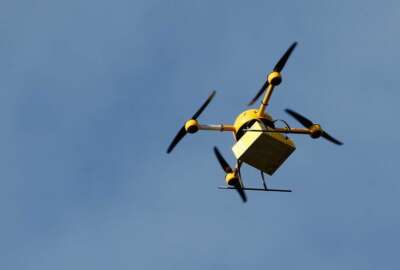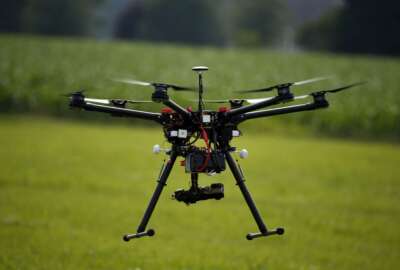
FAA working to reconcile increasing utility of drones with public safety
Before drones can be used for commercial delivery, the Federal Aviation Administration has to integrate them safely into an already crowded airspace.
More and more drones are in the air every day, and it’s only a matter of time until they’re being used for commercial delivery purposes. But before that can happen, the Federal Aviation Administration has to figure out how to integrate them safely into an already crowded airspace. That’s why it’s currently running 10 pilot programs across the country, experimenting with using drones for a variety of programs, including first responder support, hurricane damage assessment, and delivery of medical products.
“I think the administration recognized there was a need to really give a booster to innovation in this area, that in order for the US to remain a global leader and to remain competitive, and to enable the innovative operations and to unlock the economic and societal potential of these aircraft, we really needed a little bit of a push,” said Jay Merkle, executive director of the Unmanned Aerial System Integration Office at the FAA.
The FAA is looking at two main areas in particular, Merkle said. The first is safety in the air. Drones can’t be running into other aircraft, especially manned aircraft, where they can do serious damage. Multiple large airports have been temporarily shut down in the U.S. and Europe due to drone activity that could threaten passenger jets.
The second is safety regarding people and property on the ground.
“So is the aircraft reliable and durable? Is the operation safe? Can we conduct it over people?” Merkle asked. “And in many of these cases, we’re testing certainly the ability to operate safely over people which is important from an FAA safety mission. It’s also important from a community understanding and accepting these drone operations as beneficial in their community.”
One way FAA is helping to mitigate the risk of operating over people and communities would probably be considered a design flaw by most consumers: the FAA drones are made to be easily breakable.
“It’s what we call frangible. In other words, it breaks apart when sufficient forces put on its components,” Merkle said. “And that ensures that for example, a rotor or an arm that holds the rotor doesn’t actually penetrate a person or a building or harm something. So it just simply breaks off. That same drone is also covered in a nerf like substance. So if it falls out of the sky, it literally just bounces. And so that prevents harm.”
Merkle also said the program is helping FAA make progress with moving beyond line-of-sight operations, meaning the drone is out of the operator’s direct vision. That involves some new technologies, such as machine learning to help the drone dodge obstacles. Merkle said with human pilots, it’s referred to as “see-and-avoid.” But with machine learning evaluating camera feeds, radar, and other technologies, FAA is transitioning to “detect-and-avoid.”
That same machine learning is also being applied to help drones perform visual inspections with less input from a human operator.
“What was done with a human either looking up at a pole or looking down at a railroad, it’s now being done with video and multiple types of sensors, visual range infrared, others, and now the machines can start to detect where are the problems so they can start to look at ‘Hmm, that’s not only a broken component on a power pole, but that might be a fatigued component on a power pole,’” Merkle said. “And where that would take humans hours to do, or it would take a human looking at video alone would have to look at tens of thousands of images, the machine learning starts to detect these things and do it and then point out to a human ‘Oh, I think this is in fact a broken component or fatigued component, etc.’”
Copyright © 2025 Federal News Network. All rights reserved. This website is not intended for users located within the European Economic Area.
Daisy Thornton is Federal News Network’s digital managing editor. In addition to her editing responsibilities, she covers federal management, workforce and technology issues. She is also the commentary editor; email her your letters to the editor and pitches for contributed bylines.
Follow @dthorntonWFED
Related Stories





